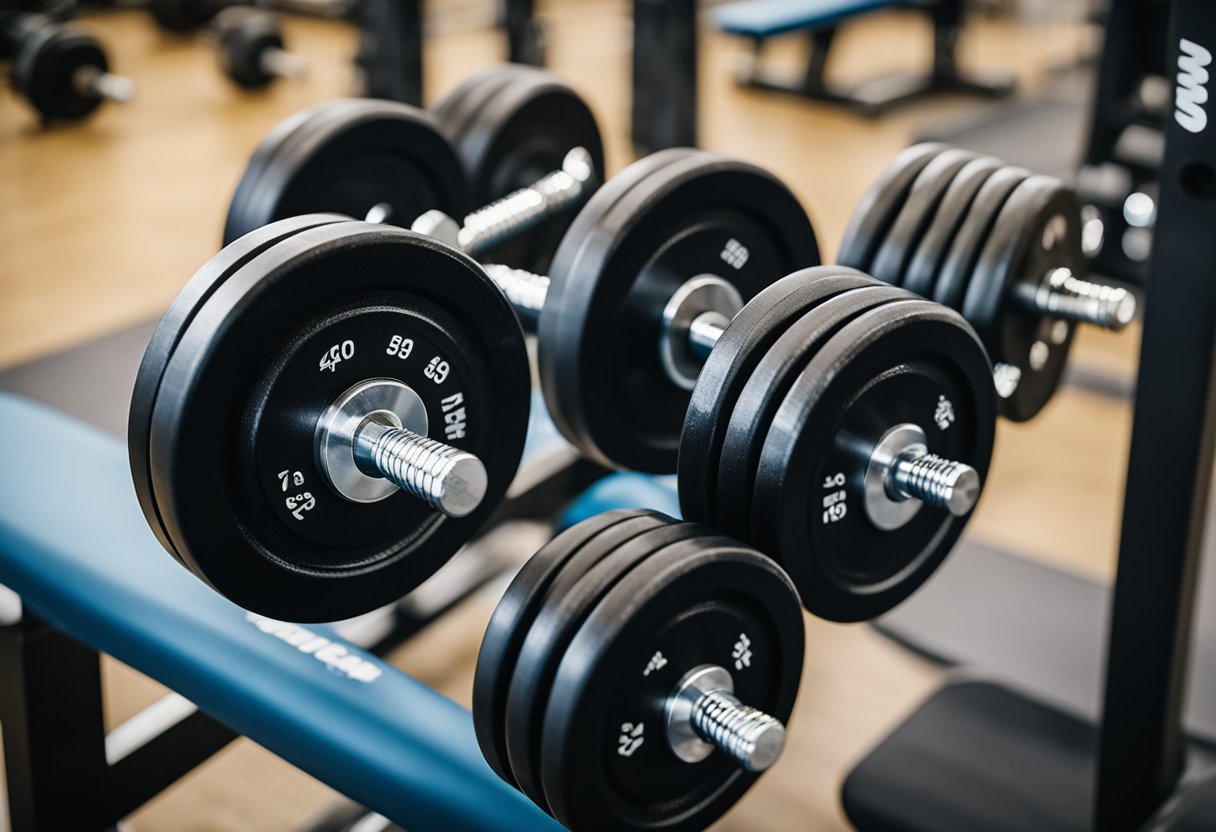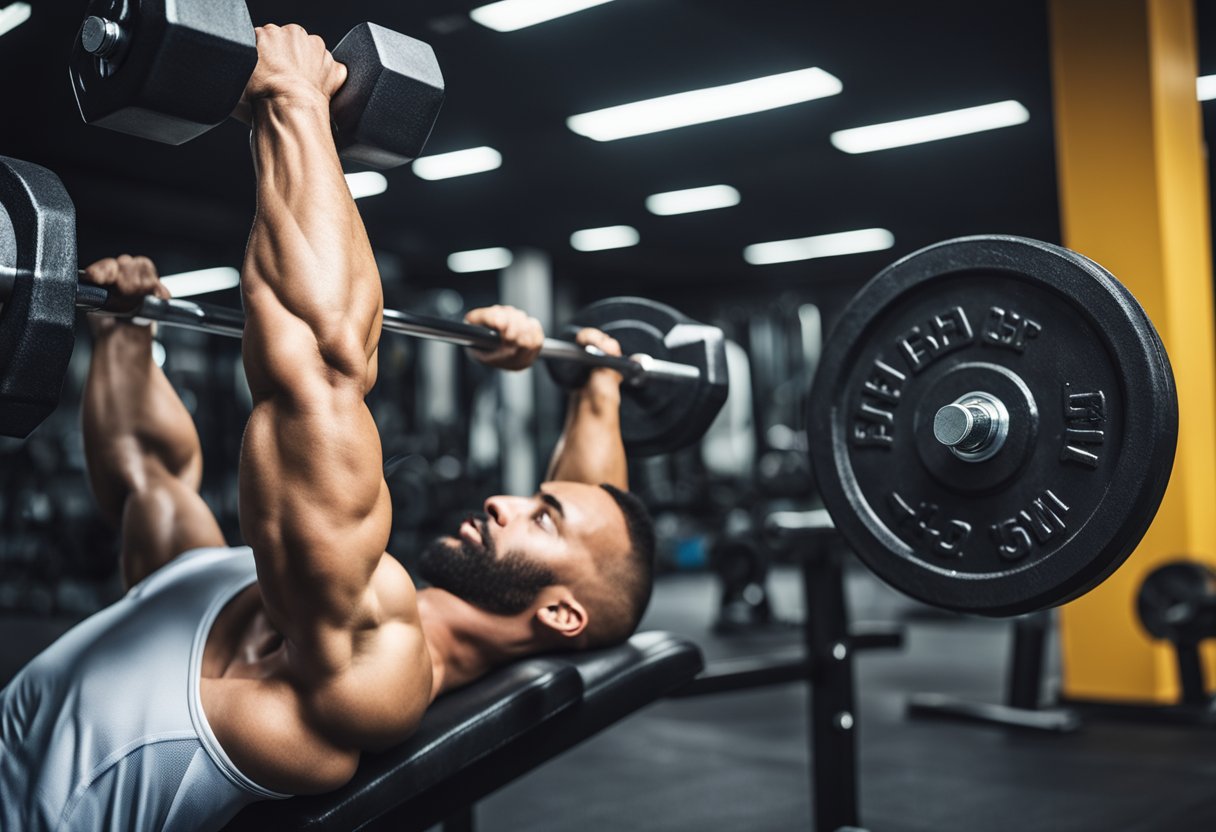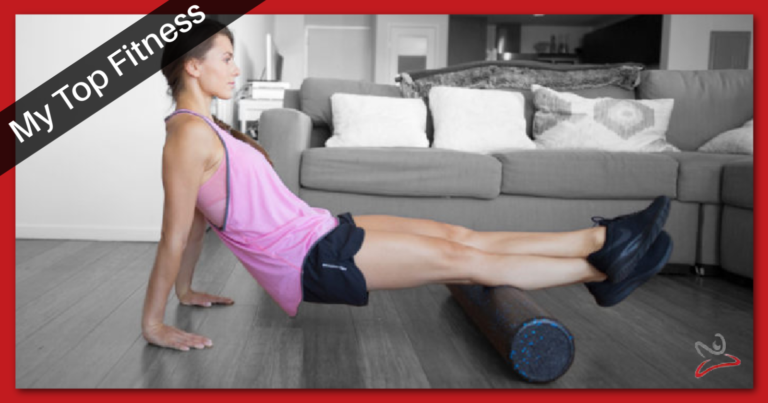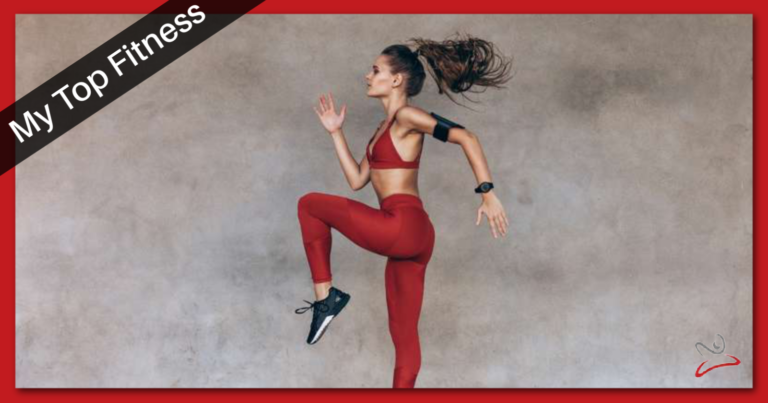How to Easily Get Dumbbells Up for Bench Press!
If you’re looking to improve your bench press, incorporating dumbbells into your training routine can be a great way to do so. However, getting the dumbbells up into position can be a challenge for some lifters. In this article, we’ll go over some tips and techniques for getting the dumbbells up so you can focus on your form and technique during the actual lift.

Understanding the basics of this exercise is crucial before we dive into how to get the dumbbells up. The dumbbell bench press is a variation of the traditional barbell bench press that can help to improve muscle imbalances and target different areas of the chest. It involves lying on a bench with a dumbbell in each hand and pressing the dumbbells up towards the ceiling. This exercise can be performed on a flat bench, incline bench, or decline bench, each targeting different areas of the chest.
Now that we understand the basics, let’s dive into how to get the dumbbells up. There are a few different techniques you can use, including the “kick up” technique and the “alternating knee drive” technique. We’ll cover these in more detail in the following sections. By using these techniques, you can safely and effectively get the dumbbells up into position for the dumbbell bench press.
Key Takeaways
- The dumbbell bench press is a great variation of the traditional barbell bench press that can help to improve muscle imbalances and target different areas of the chest.
- There are a few different techniques you can use to get the dumbbells up into position for the dumbbell bench press, including the “kick up” technique and the “alternating knee drive” technique.
- By using these techniques, you can safely and effectively get the dumbbells up into position for the dumbbell bench press so you can focus on your form and technique during the actual lift.
Understanding the Basics
If you are new to bench press, you might be wondering how to get dumbbells up for bench press. In this section, we will cover the basics of bench press and the role of dumbbells in this exercise.
The Role of Dumbbells
Dumbbells are a great tool for bench press because they allow for a more natural range of motion of the shoulders and individual training of each arm. Unlike a barbell, where both arms are forced to move together, dumbbells allow each arm to move independently. This can help to correct muscle imbalances and improve overall strength.
The Importance of Bench Press
Bench press is a great exercise for building strength and muscle in the chest, shoulders, and triceps. It is a compound exercise, which means it works multiple muscle groups at the same time. This makes it an efficient exercise for anyone looking to build strength and muscle.
To perform a dumbbell bench press, you will need to lie flat on a bench with your feet flat on the floor. Hold the dumbbells with your palms facing forward and your elbows at a 90-degree angle. Press the dumbbells up and together until your arms are fully extended. Lower the dumbbells back down to your chest and repeat.
In summary, dumbbells are a great tool for bench press because they allow for a more natural range of motion of the shoulders and individual training of each arm. Bench press is an important exercise for building strength and muscle in the chest, shoulders, and triceps.
The Muscles Involved

When performing a dumbbell bench press, several muscle groups are involved in the movement. Understanding which muscles are being targeted can help you tailor your workout to achieve your desired results.
Chest Muscles
The primary muscle group targeted during a dumbbell bench press is the chest, specifically the pectoralis major. This muscle is responsible for adduction and horizontal flexion of the humerus, which is essential for pushing movements. The dumbbell bench press also targets the anterior delts, which are the front part of the shoulder muscles.
Shoulder Muscles
In addition to the anterior delts, the dumbbell bench press also works the medial and posterior deltoids. These muscles help with shoulder abduction and rotation, which are important for stabilizing the shoulder joint during the movement.
Arm and Back Muscles
The triceps and biceps are also involved in the dumbbell bench press. The triceps are responsible for elbow extension, while the biceps assist with elbow flexion. The latissimus dorsi, or lats, are also involved in the movement, helping to stabilize the shoulder joint and provide support to the upper body.
It’s important to note that the rotator cuff muscles are also involved in the dumbbell bench press, as they help to stabilize the shoulder joint during the movement. Strengthening these muscles can help prevent injury and improve overall shoulder health.
In summary, the dumbbell bench press is a compound movement that targets several muscle groups, including the chest, shoulders, arms, and back. Incorporating this exercise into your workout routine can help you build strength and muscle mass in these areas.
Proper Technique and Form
If you want to properly execute a dumbbell bench press, it’s essential to have the right technique and form. Here are some key factors to consider:
Hand Position
When holding the dumbbells, make sure to use a neutral grip. This means that your palms should be facing each other, with your thumbs pointing towards your feet. This grip will help you maintain control over the dumbbells and avoid any unnecessary strain on your wrists.
Body Position
To start, sit on the bench with the dumbbells resting on your knees. Then, lie back on the bench with the dumbbells still on your hips. Once you’re in position, engage your core and press the dumbbells towards the ceiling.
Range of Motion
When lowering the dumbbells, make sure to keep your elbows at a 45-degree angle to your body. This will help you maintain proper form and avoid any unnecessary strain on your shoulders. Additionally, make sure to lower the dumbbells until your elbows are parallel to the bench. This will ensure that you’re getting the most out of each rep.
Remember to keep your feet firmly planted on the ground throughout the exercise. This will help you maintain stability and avoid any unnecessary strain on your lower back. Additionally, make sure to squeeze your shoulder blades together as you lift the dumbbells. This will help you engage your back muscles and maintain proper form.
Finally, don’t forget to engage your glutes throughout the exercise. This will help you maintain proper form and avoid any unnecessary strain on your lower back.
By following these tips and techniques, you’ll be able to properly execute a dumbbell bench press and get the most out of each rep.
Common Mistakes and How to Avoid Them
When it comes to bench pressing with dumbbells, there are a few common mistakes that people make that can lead to injuries or less effective workouts. By avoiding these mistakes, you can get the most out of your bench press and reduce your risk of injury.
Incorrect Hand Position
One mistake that people make is holding the dumbbells in the wrong position. Your hands should be directly over your elbows, with your palms facing forward. If your hands are too far forward or back, it can put unnecessary strain on your shoulders and wrists.
To avoid this mistake, make sure to adjust your hand position before you start the lift. Take a moment to check that your hands are in the correct position, and adjust them if needed.
Improper Body Position
Another common mistake is having improper body position during the lift. Make sure that your back is flat against the bench and your feet are firmly planted on the ground. If your back is arched or your feet are not stable, it can lead to lower back pain or even injury.
To avoid this mistake, take a moment to adjust your body position before you start the lift. Make sure that your back is flat against the bench and your feet are firmly planted on the ground.
Lack of Control
Finally, many people make the mistake of not having enough control during the lift. If you are swinging the weights or using momentum to lift them, you are not getting the full benefit of the exercise.
To avoid this mistake, focus on using slow, controlled movements during the lift. Make sure that you are lifting the weights with your muscles, not with momentum.
By avoiding these common mistakes, you can get the most out of your bench press with dumbbells and reduce your risk of injury.
Different Variations of Dumbbell Bench Press
If you’re looking to mix up your dumbbell bench press routine, there are several variations that you can try. These variations target different areas of your chest and can help you build strength and muscle in different ways.
Incline Dumbbell Bench Press
The incline dumbbell bench press is a variation of the dumbbell bench press that targets the upper chest muscles. To perform this exercise, adjust the bench to an incline position and lie down with a dumbbell in each hand. Lower the dumbbells down to your chest and then press them back up towards the ceiling. This exercise can help you build a stronger and more defined upper chest.
Dumbbell Floor Press
The dumbbell floor press is a variation of the dumbbell bench press that is performed on the floor instead of on a bench. To perform this exercise, lie on your back on the floor with a dumbbell in each hand. Lower the dumbbells down to your chest and then press them back up towards the ceiling. This exercise can help you improve your shoulder stability and build strength in your triceps.
Single-Arm Dumbbell Bench Press
The single-arm dumbbell bench press is a variation of the dumbbell bench press that is performed with one arm at a time. To perform this exercise, lie down on a bench with a dumbbell in one hand. Lower the dumbbell down to your chest and then press it back up towards the ceiling. This exercise can help you improve your overall chest strength and stability.
Alternating Dumbbell Bench Press
The alternating dumbbell bench press is a variation of the dumbbell bench press that is performed with one arm at a time. To perform this exercise, lie down on a bench with a dumbbell in each hand. Lower one dumbbell down to your chest and then press it back up towards the ceiling while keeping the other dumbbell held at the top position. Alternate between arms for each repetition. This exercise can help you improve your chest strength and stability while also improving your rotational stability.
Mixing up your dumbbell bench press routine with these variations can help you build a stronger and more defined chest while also improving your overall strength and stability.
Programming and Training
When it comes to programming and training for dumbbell bench press, there are a few key factors to consider. By focusing on sets, reps, strength training, and muscular endurance, you can create an effective program that helps you build strength and muscle mass over time.
Sets and Reps
One important factor to consider when programming for dumbbell bench press is the number of sets and reps you perform. Generally, it’s recommended to perform 3-5 sets of 8-12 reps per exercise. This allows you to work both your strength and muscular endurance while also providing enough volume to stimulate muscle growth.
Strength Training
Another key aspect of programming for dumbbell bench press is strength training. By focusing on heavy weights and low reps, you can build strength and power in your chest and upper body. To do this, consider incorporating exercises like heavy dumbbell bench press, incline dumbbell bench press, and decline dumbbell bench press into your routine.
Muscular Endurance
In addition to strength training, it’s also important to focus on muscular endurance when programming for dumbbell bench press. This means incorporating exercises that challenge your endurance and stamina, such as high-rep dumbbell bench press, push-ups, and chest flys. By doing this, you can build both strength and endurance in your chest and upper body.
Overall, by focusing on sets, reps, strength training, and muscular endurance, you can create an effective program for dumbbell bench press that helps you build strength and muscle mass over time. So, get excited and start programming your next workout today!
Alternatives to Dumbbell Bench Press
If you don’t have access to dumbbells or you’re looking for a change in your routine, there are plenty of alternatives to the dumbbell bench press that can still help you build upper body strength and improve your bench press technique. Here are a few options to consider:
Barbell Bench Press
The barbell bench press is a classic exercise that’s often considered the gold standard of upper body strength training. It targets many of the same muscles as the dumbbell bench press, including the chest, shoulders, and triceps. The main difference is that you’ll be using a barbell instead of dumbbells, which can allow you to lift heavier weights and challenge your muscles in new ways.
To perform a barbell bench press, lie down on a flat bench with your feet firmly planted on the ground. Grip the barbell with your hands slightly wider than shoulder-width apart, and slowly lower the bar down to your chest. Pause briefly, then push the bar back up to the starting position. Repeat for multiple reps and sets.
Push-Ups
Push-ups are a bodyweight exercise that can be done anywhere, making them a convenient and effective alternative to the dumbbell bench press. They target many of the same muscles, including the chest, shoulders, and triceps, while also engaging your core and lower body.
To perform a push-up, start in a plank position with your hands shoulder-width apart and your feet hip-width apart. Lower your body down towards the ground, keeping your elbows close to your sides, until your chest touches the ground. Push back up to the starting position, keeping your core engaged throughout the movement. Repeat for multiple reps and sets.
Close-Grip Bench
The close-grip bench press is a variation of the traditional bench press that places more emphasis on the triceps. It can be a useful alternative to the dumbbell bench press if you’re looking to target your triceps specifically or if you want to switch up your routine.
To perform a close-grip bench press, lie down on a flat bench with your hands placed close together on the barbell. Lower the bar down to your chest, keeping your elbows close to your sides, and then push it back up to the starting position. Repeat for multiple reps and sets.
Overall, there are many alternatives to the dumbbell bench press that can help you build upper body strength and improve your bench press technique. Whether you choose to do the barbell bench press, push-ups, or close-grip bench, make sure to focus on proper form and gradually increase the weight or difficulty of the exercise over time.
The Importance of a Spotter
When it comes to lifting weights, safety should always be your top priority. This is especially true when performing the bench press exercise with dumbbells. That’s where a spotter comes in handy.
A spotter is someone who stands behind you while you lift weights and provides assistance if you need it. They can help you lift the weights up and rack them safely when you’re done. Having a spotter can make a big difference in your ability to perform the exercise safely and effectively.
Not only does a spotter provide safety, but they can also help you push yourself to lift heavier weights. When you have a training partner or spotter, you are more likely to push yourself to your limits and achieve your goals. They can also provide motivation and encouragement during your workout.
It’s important to choose a spotter who is experienced and knowledgeable about the exercise you’re performing. They should know how to properly assist you without interfering with your form or causing injury. Make sure to communicate with your spotter before and during the exercise to ensure that you’re both on the same page.
In summary, having a spotter is crucial when performing the bench press exercise with dumbbells. They provide safety, assistance, motivation, and encouragement during your workout. Choose a spotter who is experienced and knowledgeable to help you achieve your goals safely and effectively.
Conclusion
Congratulations! You now know how to properly get dumbbells up for bench press without shoulder pain. By using dumbbells, you are adding more shoulder and core stability in each lift, giving you the opportunity to add variety to your workout routine, and taking pressure off your shoulder.
Remember to grip each dumbbell firmly and squeeze your shoulder blades together. Kick one knee up to drive a dumbbell to your shoulder, then drive the other knee up. Be careful not to launch the dumbbells up with your legs, as this can cause injury.
The dumbbell bench press is an excellent exercise for building upper-body strength and promoting muscle growth in your chest, shoulders, and triceps. By performing unilateral exercises like the dumbbell bench press, you can also correct muscle imbalances and ensure both sides of your body are equally strong.
If you’re looking to get stronger, hypertrophy your muscles, and improve your overall fitness, incorporating the dumbbell bench press into your workout routine is a great solution. Make sure to contract your pecs and shoulder stabilizers as you press the dumbbells up, and use proper form to maximize your gains.
So what are you waiting for? Grab those dumbbells and start bench pressing like a pro!





